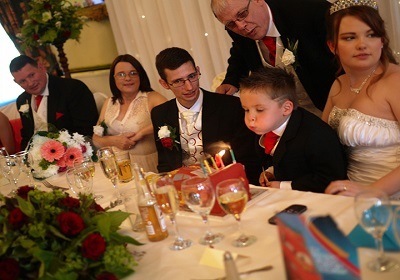Hãy nhập câu hỏi của bạn vào đây, nếu là tài khoản VIP, bạn sẽ được ưu tiên trả lời.


Câu hỏi của Nguyễn Võ Hoàng Minh Hạnh - Học và thi online với HOC24


EX1:
1/ What does Nga do at secondary school?
2/ How often does Nam fly a kite?
EX2:
1/ Is it hot in Viet Nam in April?
2/ When do you go out with your friends?
EX1:
1.Miss Nga is teaching English at secondary school
→What is Miss Nga doing at secondary school?
2. Nam never flies a kite
→How often does Nam fly a kite?
EX2:
1. It / hot / Viet Nam / April?
→Is it hot in VietNam in April?
2. When / you / go out / your friends?
→When are you go out with your friends?
Bài này mik làm lần thứ 2 rồi

Seekers must blindfolded, facing the wall and eyes to count from one to a hundred; does not count the time to hear one answered again, the quest began. And those who flee the agility needed to find a safe hiding place, a secret to the other and not find yourself a winner. The game only really finished when all seekers find some people go away, even if seekers surrender shall be deemed to have lost and start playing again.
Actually hide and seek game is simple, bring a lot of joy, surprise and excitement for everyone. An idyllic folk games, intimacy and contributes to "complete" their own Vietnam rural countryside.
Between the new mom straw sun yesterday, still smelling of straw, children can slip away to snuggle into, but suffocation. There are those who sneak into the corner, then no electric light, hold your breath and listen to the footsteps of seekers. The game is simple but full of suspense and expectation, full of surprises.
When people go looking tired, find out helpless forever lost to me then, and you will go, the fled screaming loudly Dating "I'm here this is not that easy to find." At that time the eyes of the seekers xị down as being someone stole toys.

xin chòa mình là người đã kết bạn với bạn đây sticknote123456 đây hè hè bày đặc gỏi tiếng lắm nhỉ
ko hỉu bày đặc gỏi nhak . . . . . . . . . !
còn học tiếng anh thì tớ có kêu tớ giỏi đâu ! lè lè ![]()


thì hiện tại tiếp diễn lớp 6
thì hiện tại đơn giản
thì hiện tại tiếp diễn lớp 6
thì quá khứ đơn lớp 6
thì quá khứ tiếp diễn
thì quá khứ hoàn thành
thì quá khứ hoàn thành tiếp diễn
thì tương lai
thì tương lai tiếp diễn
thì tương lai hoàn thành
thì tương lai hoàn thành tiếp diễn
2.S+BE+PAST PARTICIPLE(QUÁ KHỨ)
S+V+(O):điều khoảng
S+TOLD/SAID+(O)+(THAT)+điều khoảng
1)
1. Thì hiện tại đơn:
Form:
(+) S + V/ V(s;es) + Object...
(-) S + do/ does not + V ?
(?) Do/ Does + S + V?
Cách sử dụng:
-Diễn tả năng lực bản thân:
VD: He plays tennis very well.
-Thói quen ở hiện tại:
VD: I watch TV every night.
-Sự thật hiển nhiên;Chân lí ko thể phủ nhận:
VD: The sun rises in the East and set in the West.
-Diễn tả hành động xảy ra theo lịch trình, thời gian biểu đã định sẵn, đặc biệt là các động từ di chuyển
VD: The train leaves at 7.00 am in the morning.
Các trạng từ đi kèm: always; usually; often; sometimes; occasionally; ever; seldom; rarely; every...
Cách thêm “s,es” vào động từ khi ở thể khẳng định của thì hiện tại đơn:
-Khi chủ ngữ là "I / You / We / They và các chủ ngữ số nhiều khác” thì giữ nguyên động từ
-khi chủ ngữ là "He / She / It và các chủ ngữ số ít khác" thêm "s" hoặc "es" sau động từ
Với những động từ tận cùng bằng "o,x, ch, z, s, sh" thì ta thêm "es" vào sau, còn các động từ khác thì thêm “s”
Khi động từ tận cùng là "y" thì đổi "y" thành "i" và thêm "es" vào sau động từ
Cách phát âm s,es:
/iz/: các động từ kết thúc bằng đuôi: ce, x, z, sh, ch, s, ge
/s/:các động từ kết thúc bằng t, p, f, k, th
/z/:không có trong hai trường hợp trên
2. Hiện tại tiếp diễn:
Form:
(+) S + is/am/are + Ving
(-) S + is/am/are not + Ving
(?) Is/Am/ Are + S + Ving ?
Cách sử dụng:
-Đang xảy ra tại thời điểm nói
VD: I’m doing my homework at this time.
-Sắp xảy ra có dự định từ trước trong tương lai gần.
VD: I’m going to the cinema tomorrow evening
-Không dùng với các động từ chi giác như: SEE; HEAR; LIKE; LOVE...
Các trạng từ đi kèm: At the moment; at this time; right now; now; immediately…
3. Hiện tại hoàn thành:
Form:
(+) S + have/has + PII
(-) S + have/has not + PII
(?) Have/ Has + S + PII
Cách sử dụng:
- Xảy ra trong quá khứ, kết quả liên quan đến hiện tại.( Nhấn mạnh đến kết quả của hành động)
VD: We have played soccer since we were children.
-Diễn tả hành động đã xảy ra, hoặc chưa xảy ra ở thời điểm không xác định trong quá khứ
VD: She has been in China for a long time.
Các trạng từ hay đi kèm: just; recently; lately; ever; never; already; yet; since; for; so far; until now; up to now; up to present..
4. Hiện tại hoàn thành tiếp diễn:
Form:
(+) S + have/has been + Ving
(-) S + have/has been + Ving
(?) Have/Has + S + been + Ving
Cách sử dụng:
-Xảy ra trong quá khứ, kéo dài đến hiện tại và có thể tiếp tục xảy ra trong tương lai. ( Nhấn mạnh tính liên tục của hành động)
VD:
Các trạng từ đi kèm: just; recently; lately; ever; never; since; for….
5. Quá khứ đơn:
Form:
(+) S + Ved/ PI-cột 2 trong bảng Động từ bất quy tắc.
(-) S + didn’t + V
(?) Did + S + V
Cách sử dụng:
-Xảy ra và chấm dứt hoán toàn trong quá khứ.
-Nhiều hành động xảy ra liên tiếp trong quá khứ.
-Trong câu điều kiện loại 2.
Các trạng tù đi kèm: Yesterday; the day before yesterday; ago; already; last; in + mốc thời gian trong quá khứ.
Cách đọc ed:
/id/: t,d
/t/: c, ch, s, f, k, p x, sh
/d/: các trường hợp còn lại
6. Quá khứ tiếp diễn:
Form:
(+) S + was/ were + Ving
(-) S + was / were not + Ving.
(?) Was/ Were + S + Ving.
Cách sử dụng:
-Các hành động xảy ra tại 1 thời điểm xác định trong quá khứ
-Nhiều hành động xảy ra đồng thời trong quá khứ.
-Một hành động đang xảy ra 1 hành động khác xen vào: hành động đang xảy ra dùng QKTD; hành động xen vào dùng QKĐ.
Các từ nối đi kèm: While; when.
7. Quá khứ hoàn thành:
Form:
(+) S + had + PII
(-) S + had not + PII
(?) Had + S + PII
Cách sử dụng:
- Một hành động xảy ra trước 1 hành động khác trong QK ( hành động xảy ra trước dùng QKHT; hành động xảy ra sau dùng QKĐ)
-Hành động xảy ra trước 1 thời điểm xác định trong quá khứ.
-Trong câu điều kiện loại 3.
Các trạng từ đi kèm: before; after; when; while; as soon as; by(trước); already; never; ever; until...
8. Quá khứ hoàn thành tiếp diễn (ít dùng):
Form:
(+) S + had been + Ving
(-) S + hadn’t been + ving
(?) Had + S + been + Ving
Cách sử dụng:
- Chỉ hành động đã và đang diễn ra và có thể hoàn tất trước 1 hành động khác trong quá khứ ( nhấn mạnh đến tính liên tục của hành động)
Các trạng từ đi kèm: before; after; when; while; as soon as; by(trước); already; ever; until…
9. Tương lai đơn:
Form:
(+) S + will/ shall + V (will ngày nay có thể dùng với tất cả các
(-) S + will/ shall not + V ngôi nhưng shall dùng với “ I” và “WE” )
(?)Will / Shall + S + V
Cách sử dụng:
-Sắp xảy ra trong tương lai không có dự định trước.
-Câu yêu cầu; đề nghị; lời hứa; dự đoán cho tương lai.
-Trong câu điều kiện loại 1.
Các trạng từ đi kèm: tomorrow; the day after tomorrow; next; in + thời gian ở tương lai…
Tương lai gần:
Form:
(+) S + is/am/are + going to + V
(-) S + is/am/ are not + going to + V
(?)Is/Am/ Are + S + going to + V
Cách sử dụng:
-Sắp xảy ra trong tương lai có dự định trước.
-Chắc chắn sẽ xảy ra trong tương lai theo 1 tình huống cho trước.
Các trạng từ đi kèm: tomorrow; the day after tomorrow; next; in+ thời gian ở tương lai…
10. Tương lai tiếp diễn:
Form:
(+) S + will / shall + be + Ving
(-) S + will / shall not + be + Ving
(?) Will / Shall + S + be + Ving
Cách sử dụng:
-Đang xảy ra tại thời điểm xác định trong tương lai.
-Nhiều hành động xảy ra đồng thời trong tương lai.
Các trạng từ đi kèm: các trạng từ như trong tương lai đơn; nhưng phải dựa vào từng hoàn cảnh cụ thể để chia thì.
11. Tương lai hoàn thành:
Form:
(+) S + will / shall + have + PII
(-) S will/ shall not + have + PII
(?) Will / Shall + S + have + PII
Cách sử dụng:
-Một hành động xảy ra trước 1 hành động khác trong tương lai.
-Một hành động xảy ra trước 1 thời điểm xác định trong tương lai.
Các trạng từ hay đi kèm: By the time; By + mốc thời gian trong quá khứ.
12.Tương lai hoàn thành tiếp diễn:
Form:
(+) S + will have been + Ving
(-) S + won’t have been + Ving
(?) Will + S + have been + Ving
Cách sử dụng:
-Kết hợp với mệnh đề thời gian ( by the time + thì hiện tại đơn )
-Diễn tả hành động đã và đang xảy ra và có thể hoàn tất trước 1 hành động khác trong tương lai.
Dấu hiệu nhận biết: By the time + mệnh đề thời gian ở thì hiện tại; by + ngày/ giờ.

there are four seasons in the years .They are spring ,summer ,fall and winter . In the spring ,the weather is warm so i often go sailing.In the summer , the weather is very hot , i go swimming and i play badminton.In the fall ,when it is cool i often go running .And in the winter ,the weather is very cold , i often play soccer.






This is a family happy
and lovely